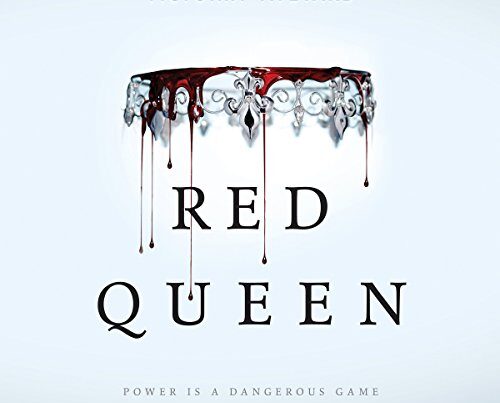Nathaniel Hawthorne’s “Young Goodman Brown” is a classic short story exploring themes of faith and evil. This audiobook collection includes several of his other notable works.
Nathaniel Hawthorne, a renowned American author, delves deep into the human psyche and moral complexities in his stories. “Young Goodman Brown” portrays a journey through the dark woods, symbolizing a man’s struggle with faith and temptation. Hawthorne’s vivid storytelling and rich symbolism make his works timeless.
This audiobook collection offers listeners a chance to experience Hawthorne’s profound narratives and intricate characterizations. Ideal for fans of classic literature, these stories provide insight into 19th-century American society and its moral dilemmas. Enjoy the immersive experience of Hawthorne’s tales through this well-curated audiobook.
The Life Of Nathaniel Hawthorne
Nathaniel Hawthorne was born in 1804. His birthplace was Salem, Massachusetts. His family had a long history in Salem. Young Nathaniel lost his father at sea. This happened when he was only four years old. His mother raised him alone. He loved reading from a young age. He attended Bowdoin College in Maine. There, he met lifelong friends. One of them was Franklin Pierce. Another friend was Henry Wadsworth Longfellow. These friendships greatly influenced his life.
Hawthorne wrote many famous stories. His most famous book is “The Scarlet Letter”. This book explores themes of sin and guilt. Another famous work is “The House of the Seven Gables”. He also wrote “Young Goodman Brown”. This is a short story about a man’s journey. His stories often have dark themes. They explore human nature deeply. Hawthorne’s writing style is unique. It mixes romance and realism. His works are still read today. They are considered classics in American literature.

Introduction To ‘young Goodman Brown’
‘Young Goodman Brown’ is a short story by Nathaniel Hawthorne. It tells the tale of a man named Goodman Brown. He leaves his wife, Faith, for a night journey in the forest. In the forest, he meets a mysterious man. This man leads him to a witches’ meeting. There, Goodman Brown sees many people he knows. These people include his wife and respected community members. He becomes confused and scared. He wonders if they are all sinners. The next morning, he returns home. He feels distrustful and sad.
The story takes place in 17th century Salem Village. The village is in Massachusetts. This period is known for the Salem witch trials. The forest is dark and eerie. It adds to the story’s mysterious mood. The setting plays a key role in the story. It reflects the fear and suspicion of the time.
Themes In ‘young Goodman Brown’
Nathaniel Hawthorne’s “Young Goodman Brown” delves into themes of faith, guilt, and the duality of human nature. This audiobook offers a captivating exploration of moral ambiguity and personal conflict.
Faith And Doubt
Young Goodman Brown struggles with faith and doubt. He loves his wife, Faith, and trusts in her goodness. But he doubts the purity of others. This internal conflict drives him deeper into the forest and his own mind. Doubt starts to overpower his faith, leading him to question everything.
Good Vs. Evil
The story explores the battle between good and evil. Brown meets many characters who appear good but have a dark side. This duality confuses him and makes him question his beliefs. The line between good and evil becomes blurred. This leaves Brown in a constant state of confusion.
Public Morality Vs. Private Morality
Many characters in the story show a difference between public and private morality. They act good in public but have secret sins. Brown discovers that those he thought were pure have hidden dark sides. This realization shakes his trust in the community and himself. It makes him doubt if anyone can truly be good.
Characters Analysis
Goodman Brown is a young man who lives in Salem. He is married to Faith. Goodman goes into the forest one night. He meets a mysterious old man. He sees strange things in the forest. Goodman starts to doubt his faith and his community. He returns home but feels changed.
Faith Brown is Goodman’s wife. She represents purity and innocence. Faith worries about Goodman when he leaves. She wears pink ribbons in her hair. Faith’s presence is comforting to Goodman. But he still leaves her alone. Faith’s role is crucial in showing the theme of lost innocence.
The Old Man is a mysterious figure. He meets Goodman in the forest. He looks like an older version of Goodman. The Old Man carries a staff that looks like a serpent. He represents the devil and evil. He tempts Goodman to join a dark ceremony. His character brings out Goodman’s inner conflicts.
Symbolism And Allegory
The forest in “Young Goodman Brown” is dark and mysterious. It represents the unknown and temptation. Goodman Brown enters the forest, leaving behind safety. The forest is a place where he meets strange figures. It symbolizes the struggle between good and evil.
The staff carried by the stranger looks like a serpent. This staff represents evil and deception. Goodman Brown takes the staff and feels its power. The serpent staff is a symbol of the devil’s influence. It shows how easy it is to fall into sin.
Faith’s pink ribbons are a symbol of innocence and purity. When Goodman Brown sees the ribbons fall, he loses hope. The pink ribbons remind him of his wife’s goodness. They highlight the conflict between faith and doubt. The ribbons are a powerful symbol in the story.
Hawthorne’s Writing Style And Techniques
Hawthorne uses symbolism to add depth to his stories. Objects and characters often have deeper meanings. For example, the forest in “Young Goodman Brown” represents the unknown. It is a place where hidden truths are revealed.
Allegorical elements are a key part of Hawthorne’s work. Characters often symbolize broader ideas or moral lessons. In “Young Goodman Brown”, Goodman Brown’s journey can be seen as an allegory for the loss of innocence. His wife, Faith, represents his own faith.
Hawthorne delves into the psychological complexity of his characters. He explores their inner struggles and moral dilemmas. This adds a layer of realism to his stories. Readers can relate to the characters’ emotional conflicts.
Audiobook Adaptations Of Hawthorne’s Works
The narrative voice in audiobooks is crucial. A good voice actor brings characters to life. Hawthorne’s works benefit from this. Performers often use expressive tones. This keeps listeners engaged. It helps convey the emotions of the story. A skilled narrator can make a big difference.
Music and sound effects add depth to audiobooks. They create an immersive experience. Hawthorne’s tales often have eerie settings. Sound effects enhance this mood. Background music sets the tone. It makes the story more exciting. These elements keep listeners hooked.
Audiobooks make classic literature accessible. They can be enjoyed while multitasking. Hawthorne’s themes remain relevant today. Audiobooks help introduce these stories to new audiences. This keeps his work alive. It shows that good stories never age. Accessibility is key for modern readers.

Influence And Legacy
Nathaniel Hawthorne’s stories shaped American literature. His works often explore dark themes. He inspired many writers. His style is unique and memorable.
Modern readers find new meanings in his stories. “Young Goodman Brown” remains relevant today. Its themes of good and evil resonate. Scholars still study his works.
Hawthorne’s works are taught in schools. They provide valuable lessons. Students learn about history and morality. His stories encourage critical thinking.

Conclusion
Nathaniel Hawthorne’s “Young Goodman Brown” and other short stories offer timeless insights. These audiobooks bring his vivid tales to life. Perfect for fans of classic literature, they provide an immersive listening experience. Explore these powerful narratives and discover Hawthorne’s genius.
Enjoy the depth and richness of his storytelling anytime, anywhere.



